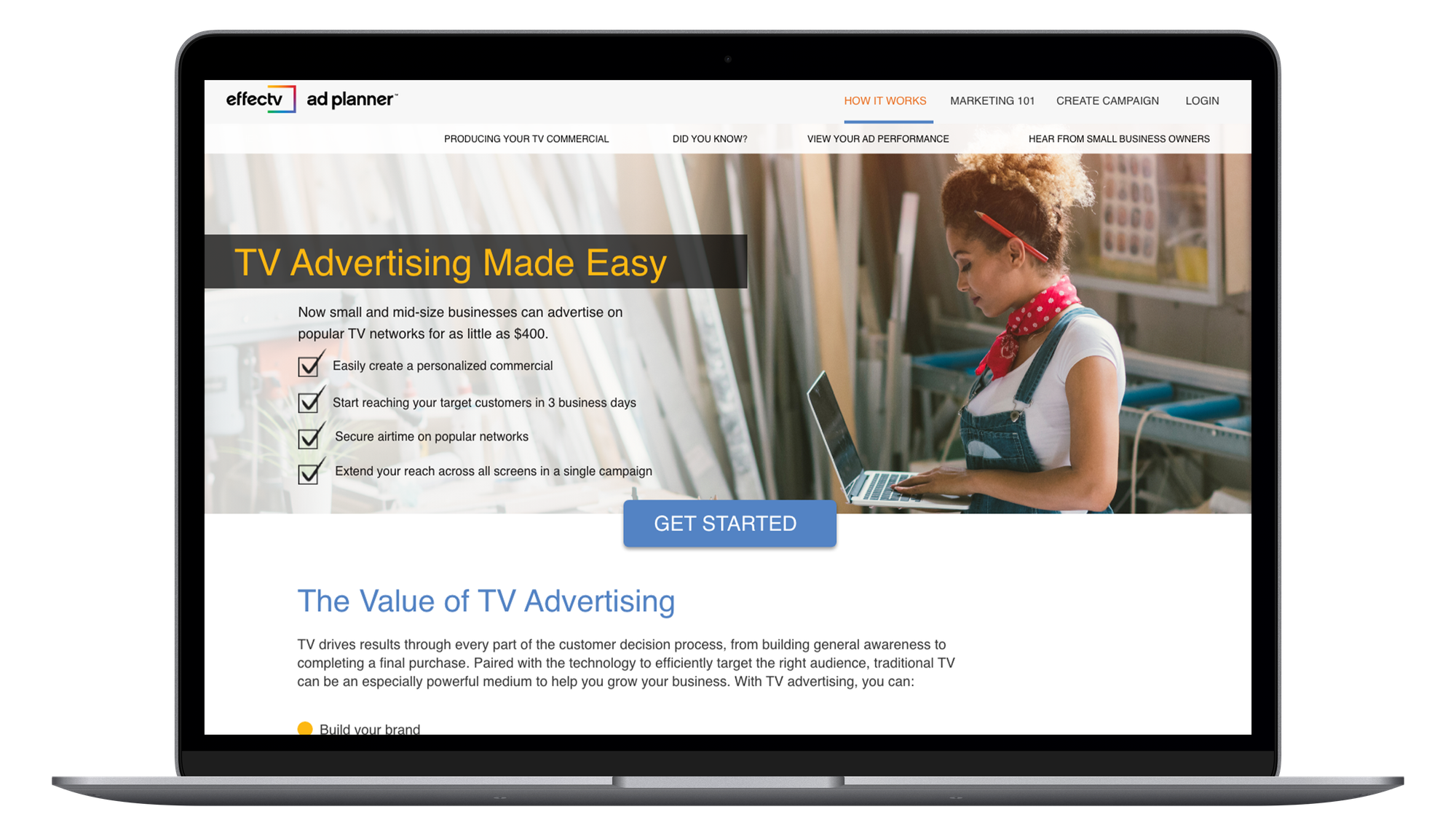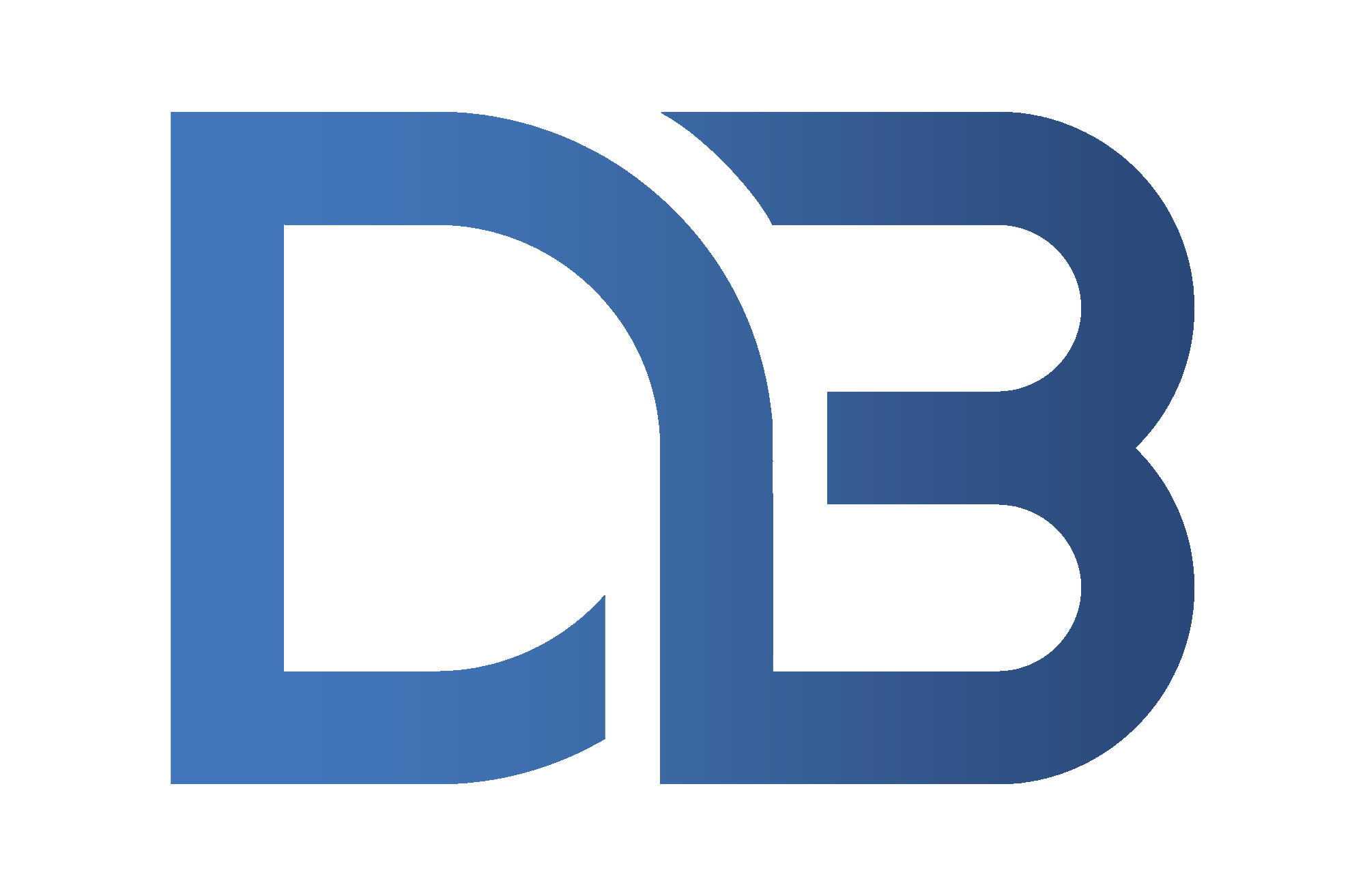
Overview
As part of a major strategic initiative at Effectv, we launched the first self-service linear TV ad buying platform in the U.S. The Ad Planner was designed specifically for small and “super-small” business owners: local shops and restaurants that traditionally believed TV ads were out of reach. This product changed that.
In collaboration with consultants at Cognizant, I led UX design, UX writing, and front-end engineering for the web app, helping educate newcomers, simplify complex tasks, and increase conversions—all while supporting Effectv’s goal of tapping into a previously unreachable market.
Audience & Opportunity
The target users were small neighborhood businesses, many with no marketing team, who had never advertised on TV. Effectv had long relied on account executives to manage high-touch ad campaigns, but that model wasn’t scalable to such small businesses.
This project had two goals:
- Expand Effectv’s market reach by empowering SMBs with a low-cost, intuitive ad-buying platform.
- Reduce operational overhead by automating traditionally manual processes and passing those savings to customers.
My Role
I played a hybrid role on a cross-functional team, contributing across design, content, and engineering:
- UX Design & Research: Wireframes, flows, usability testing, A/B testing, and iterative design improvements.
- UX Writing & Content Strategy: Clear, jargon-free language that increased comprehension and confidence.
- Front-End Engineering: Built responsive layouts and React.js components for a mobile-first PWA experience.
Methods & Tools
- Research: In-person moderated testing at Comcast Labs, remote testing via UserTesting.com, heatmaps, and eye tracking
- Testing: A/B tests for UI and copy, SUS/NPS tracking throughout pilot
- Design Tools: Adobe XD for flows, wireframes, and prototyping
- Analytics: Google Analytics for behavioral tracking and drop-off analysis
- Tech Stack: HTML5, CSS, React.js, fully responsive PWA

Designing for Mobile-First
The entire Ad Planner was built as a Progressive Web App (PWA) to support small business owners on-the-go. This included:
- A simplified landing page and onboarding experience
- A fully featured ad planner with demographic targeting
- Dashboards for campaign performance
- A commercial creation tool (akin to a web-based iMovie, with several stock campaigns to choose from and customize)
Improvements included:
- Reducing click count per task by over 40%
- Cutting task completion time in half
- Monitoring performance across devices and improving mobile usability over time
Lesson Learned: Language Was the Real UX
Initial SUS testing during the pilot revealed a major issue: users weren’t struggling with navigation or layout—they were confused by the language.
“We realized we were still speaking to users like ad industry insiders. We called them ‘spots,’ not commercials. We said ‘linear opportunities’ instead of ‘TV advertising.’ It was alienating.”
Using a combination of on-site surveys and focus groups with small business owners, we overhauled our content strategy:
- Replaced industry jargon with plain, everyday language
- Added inline explanations and tooltips for complex terms
- Used conversational tone to increase user confidence
This change had a measurable impact:
- SUS score started at 41 (well below the industry average of 67)
- After successive rounds of content iteration, the SUS score we measured every month throughout the pilot phase rose to 51 → 57 → 61 → 72, exceeding our target by the fifth and final month of the pilot.
- Feedback shifted from confusion and hesitation to clarity and confidence


The Ad Planner scaled perfectly for desktop use and was fully responsive, cross-platform, and cross-browser compatible.
Results
- SUS score increased from 41 → 72, exceeding the industry benchmark
- Clicks per task reduced by 35%
- Task completion time reduced by 50%
- Higher conversion rates as usability and comprehension improved
Cross-Functional Wins
I worked closely with PMs, engineers, and Comcast’s in-house UX research team to ensure constant feedback loops and rapid iteration. My hybrid role also allowed me to translate tested design solutions directly into code, helping reduce design-developer handoff friction and accelerate launches.
We also partnered with marketing and legal to validate new content approaches that balanced clarity with compliance.
Reflection
This project taught me something I’ve carried with me ever since: usable language is just as critical to UX as interaction design or layout.
It was the first time my background in marketing and UX truly aligned. I had seen glimpses of this while running my own digital marketing and UX business, but Effectv’s ad-buying tool presented a unique challenge: translating a complex, legacy medium (linear cable advertising) into a modern, self-service digital experience.
And while I understood the industry language, my job was to make sure our users did too. Achieving a SUS score of 72 before the pilot ended was a proud moment because it represented months of careful, empathetic rewriting, rethinking, and listening.
But what I’m proudest of is this moment in my notes as we neared final release (this is a challenging industry and journaling one's successes sometimes provides a gem):
We returned to the same small business owners from our early focus groups and this time, they got it. There was this lightbulb moment when advertising on TV finally felt accessible. For them, it wasn’t just about running an ad. It was about a completely new understanding of what their business could be, and where.
As a former small business owner myself, that hit home. I didn’t just design something useful—I helped make something feel possible.
Resources
Adweek: Comcast Gives Small Businesses Easier Access to TV Inventory


